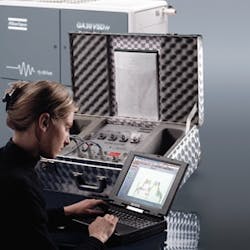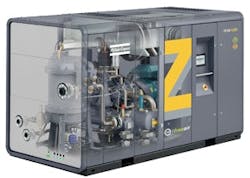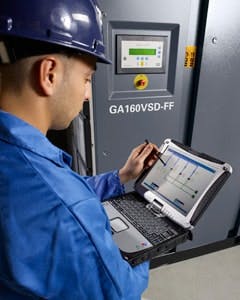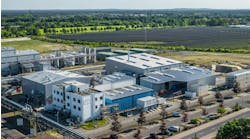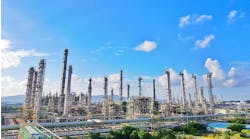Chemical makers, just like other manufacturers, are suffering from today’s economic conditions. To help trim costs and keep operations profitable, many have reduced production levels, cut hours, imposed wage and hiring freezes and, in worst cases, resorted to layoffs and even plant closings.
However, despite the push for savings, plant technical staff often overlook a number of steps that can trim costs without sacrificing productivity or manpower. Indeed, in many instances, these moves actually can increase productivity and efficiency.
One area that demands attention is energy use. While energy costs have escalated in recent years, technological advances have helped facilities increase productivity and do more with less. Many energy- and money-saving tips are really quite easy and straightforward — maintaining infrastructure, coupled with sound decision-making and sensible operating practices, quickly can add up and save most facilities revenue that otherwise would be squandered through simple laziness and improper equipment use.
Water, electricity and fuels such as natural gas are critical components for plant operation and their basic costs are out of your control. However, you can control the cost of the often forgotten fourth utility, compressed air, which is just as critical to production.
Some estimates indicate that poorly designed and maintained compressed air systems in the U.S. waste up to $3.2 billion in energy every year. A careful review of your compressed air system likely will reveal multiple opportunities to reduce energy draw and, thus, dramatically lower operating costs.
As one of the Top 100 global sustainable companies, Atlas Copco knows firsthand how to maximize production and lower energy usage during manufacturing. The company shares this knowledge in various ways. Our service team provides free compressed-air-system health checks that can help a plant’s technical staff recognize areas where improvements are possible (Figure 1). We also offer a free 156-p. “Compressed Air Best Practices Guide.” (For a copy e-mail [email protected]. Put “Manual — Chemical Processing” in the subject line and include your mailing address in the body of the e-mail.)
Opportunities for Savings
For plants that operate 24/7, several money-saving options can improve efficiency and provide a quick return on investment. For example, variable speed drive (VSD) air compressors continually and automatically adjust compressed air production to match actual plant requirements (Figure 2); analysis shows that VSDs suit more than 90% of compressor services. Compared to a fixed speed drive, a VSD sized for the same end applications requires about 35% less power, which translates into a comparable cut in energy costs.
The cost of energy is significant for compressors. Consider a plant running a 200-hp air compressor 24 hours a day. Five years ago, electricity might have cost 3¢/kWh. Today, electricity costs 8¢/kWh or more. So, the annual tab for electricity to operate that compressor has risen from around $41,000 (at 3¢/kWh) to about $110,000 (at 8¢/kWh). Switching to a VSD compressor could save almost $39,000 annually.
Most compressed air systems only run between 60 hours and 100 hours per week at anything near full capacity. For plants that don’t operate continuously, turning off compressors during evenings and weekends or according to shift patterns could trim energy bills by as much as 20%.
Also, consider decreasing air pressure. Each 2-psig reduction cuts energy consumption 1%. That saving initially may look inconsequential but certainly adds up over time. Using a compressor controller can greatly reduce the operational pressure band and much more effectively regulate air production.
If an existing air compressor is running at 65% or less of capacity, replacing it with a smaller more-efficient unit would provide an about-two-year payback time, on average, through lower utility payments. And those savings continue to compound in subsequent years.
When you factor leaks and inefficient flow monitoring into the equation, energy waste can become staggering. Depending upon pressure requirements and energy costs, a single ¼-in. leak in a compressed air line can cost from $2,500 to more than $8,000 per year. Air systems older than five years often lose up to 25% of their flow to leaks. Locating and fixing these leaks throughout a compressed air system will result in significant savings.
Strategically locating around the plant some compressed air storage tanks to reduce fluctuating demands and pressure drops within the system — and thus keep compressors from having to continually recharge — can provide additional energy savings.
Another way to achieve savings is to take advantage of the heat that air compression necessarily generates. In optimal conditions, 100% of the electrical power needed to run an Atlas Copco ZR 55-750 water-cooled, oil-free screw compressor can be recovered in the form of hot water for net zero energy consumption, backed by a TÜV Certification.
Pressure Profile
A great way to analyze a compressed air system is to develop a profile that shows pressure drops throughout the system. These pressure measurements provide valuable feedback for control adjustments, identify pressure drops across components, help determine system operating pressures and, as a result, point to direct and immediate cost savings.
Start by measuring and monitoring your compressed air system’s energy consumption, flow rates and operating air pressure (Figure 3). Small adjustments can reduce your operating pressure and energy costs while improving flow rates, output and productivity.
Your piping system design should optimize transfer of compressed air at the desired flow and pressure to the point of use. Because pressure drop in a pipe increases with the square of the increase in flow, opting for a larger pipe size can have a major impact. For instance, going to 3 in. diameter pipe from 2 in. can cut pressure drop by up to 50%. Air distribution piping should be large enough in diameter to minimize pressure drop. Shortening the distance air must travel can further reduce pressure drops by as much as 40%.
Check the pressures you are achieving and avoid spiking the pressure to compensate for leaks or drops in pressure due to piping problems or clogged filters. Fixing leaks also can help address a drop in pressure.
An ounce of prevention beats a pound of cure, so be proactive and look inside your piping system. A clean dry pipe means you have good quality air and shouldn’t have corrosion issues. Dust in the pipe comes from particles in your air and can quickly cause corrosion. If you see sludge, corrosion likely already has started and leaks will become larger and more abundant. Sludge also can harm end-use equipment and so requires immediate attention. If you don’t filter the air or if your filter is clogged, you'll have pressure drops and increase the risk of contaminating your product. Dried and filtered compressed air keeps piping clean and helps save money.
Take Control
“I don’t have enough pressure” is a common complaint from operators that too often yields unconventional and impractical solutions from the maintenance department. Maintenance staff shouldn’t be charged with modifying airflows to accommodate demand increases or take it upon themselves to manipulate the system to appease operators.
However, without a standardized set of operating procedures and consistent schedule for routine items, such as filter cleaning and changes, your maintenance staff actually can cause more harm than good (and higher operating costs) by acting on instinct and presumption.
So, develop a schedule that emphasizes proper maintenance and efficiency. Regularly change filters in the air compressor and air system to ensure air quality and prevent costly pressure drops. Systematically inspect and replace filters to safeguard your air quality. Go beyond the air compressor and compressor room. Check airline and point-of-use filters within your facility. Those are just as important to maintain as the air compressor and air compressor room filters.
Inappropriate uses of compressed air take a huge toll on energy costs. Watch for applications that can be done more effectively or more efficiently without compressed air. For example, too often compressed air is used for cooling or other applications where much lower air pressure would suffice. Look for areas where your system has been compromised with irregular add-on uses; there’s likely a simple cost-effective and conventional solution that will dramatically reduce the pressure draw on your compressed air system.
Periodically adjust condensate drains on timers to ensure they open as intended and aren’t stuck open. Replacing timer drains with zero-loss drains to stop wasting compressed air is an even more effective solution.
Like nearly everything, a compressed air system operates with greater efficiency when it receives appropriate attention. The right compressor maintenance and operating practices cut energy costs and help prevent breakdowns that result in costly downtime and lost production. Small changes and minor savings quickly add up when you calculate their value over time.
Tim Last is vice president, quality air systems, for Atlas Copco Compressors, Rock Hill, S.C. E-mail him at [email protected].

